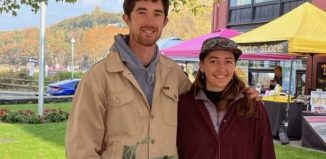Reductionism, holism and how we interpret our world
By Elof Axel Carlson
Most scientists consider themselves reductionists. The term suggests that complex things can be analyzed to simpler components. A molecule of water can be “reduced” to two hydrogen atoms and one oxygen atom. Sunlight, when using a prism, can be reduced to a spectrum of rainbow colors. Our body can be reduced to organs, tissues and organelles. A star is a ball of mostly hydrogen atoms whose mass generates such heat and pressure that some of its innermost atoms are fused, producing immense heat, ultraviolet radiation, gamma radiation, light and the formation of new elements. A galaxy is a rotating pinwheel of billions of stars.
At the same time, many scientists recognize that there are ever-changing systems. We think of ourselves changing from a fertilized egg, a ball of cells leaving the oviduct and entering the uterus, a differentiating implanted embryo forming tissues and organs, a fetus making its presence known by its movements in an amniotic sac, a newborn baby, a dependent infant, a toddler, a child actively learning, an adolescent in high school or college, a young adult, a middle-aged adult, an old person and eventually a corpse to be buried or cremated.
Along with a changing physical state in our life cycle, we are aware of how our personalities changed (or stayed constant) and the hundreds of influences from our parents, siblings, neighbors, schoolmates, teachers and hosts of encounters from whom we meet, what we read and what we observe. We recognize ourselves as being rational, emotional, spiritual, idealistic, competent, insecure, inspired, depressed, self-serving, altruistic, generous, greedy and a variety of other (often contradictory) ways. Analyzing who we are, as functioning persons or societies, is harder than identifying our physical components. That is also true for ecosystems or the associations that participate in a community whether it is a forest, grassland, tide-pool, lake or river.
Analyzing who we are, as functioning persons or societies, is harder than identifying our physical components.
Alexander Humboldt was the first to see the universe (he called it the cosmos) as a connected system. Everything is connected to everything and it constantly changes. Philosophers call this outlook “holism.”
Humboldt’s holism was systematic, and as he climbed up mountains he took notes on the plants and animals (preserving samples for later study) and chipped off minerals as he noted the changing rock formations during his ascent. He noted how temperature dropped as he climbed upward. He used instruments to measure the air pressure. The field he founded was ecology, although it would be more than 50 years later that it got its name.
In contrast to Humboldt, other scientists saw holism as a way to merge science and religion. Thus Goethe saw a spirituality in the study of the cosmos, and German scientists embraced his “nature philosophy” approach. In the United States Emerson extended holism to the universe, which he described as an “oversoul.” It launched his Transcendental movement. Still others invoked “vital spirits” or a life force that animated all living things and that disappeared when they died.
I much prefer Humboldt’s approach to those holists who invoke a supernatural aspect to complexity. If processes and things are claimed to be beyond the reach of science, then our understanding of complex things is limited. At the same time, it is naive to claim that everything is possible, such as perpetual motion, living forever, or willing oneself (unassisted) to run as fast as the speed of sound. Scientist cannot ignore the complexity of the things they study but neither should they be paralyzed into inaction because of it. Humboldt’s approach is both reductionist and holistic, and it served him and society well by enriching our understanding of how the universe works.
Elof Axel Carlson is a distinguished teaching professor emeritus in the Department of Biochemistry and Cell Biology at Stony Brook University.






